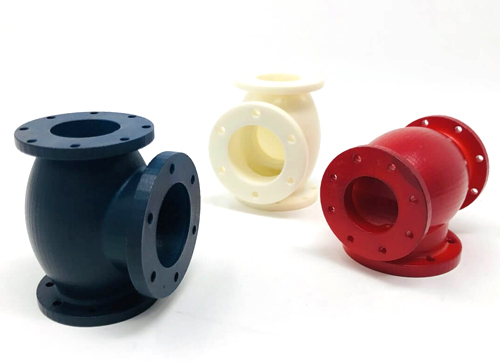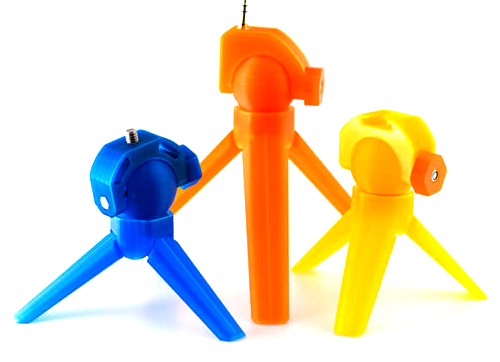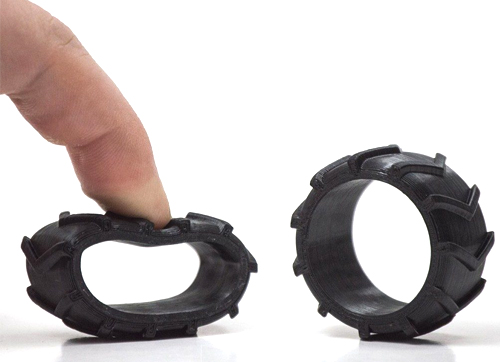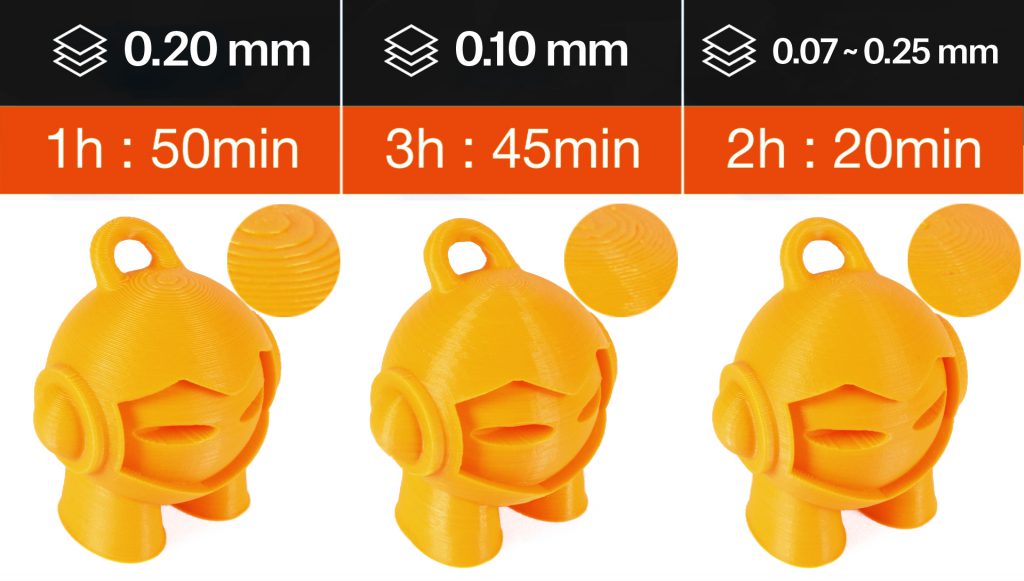FDM 3D Printing Guide
FDM 3D Printing Guide
Material Guide

PLA
This material is biodegradable and has high hardness and stiffness but is slightly brittle. PLA is resistant to most chemicals and virtually free from shrinkage. PLA however starts to deform at 60°C. We recommend PLA when it comes to very large models or indoor used objects.

ABS
ABS filament is well suited for functional parts due to it having similar properties with an injection molded part. The good bending properties and the ability to withstand temperatures up to 100°C make ABS a popular material for industrial and outdoor use, especially in cars.

PLA PLUS
PLA Plus is an improved version of regular PLA material with better surface quality, colour, and durability. It is however still recommended for indoor use only.

ABS PLUS
While ABS filament is known for its high tensile strength, it is prone to warping and shrinkage. ABS PLUS has increased hardness, improved tensile strength, and minimal shrinkage. It is highly recommended for functional models and outdoor use.

PETG
This material is also biodegradable and combines the benefits of both ABS and PLA where it is more durable, able to withstand high temperature, impact-resistant and as easy to print as PLA. PETG is a highly recommended alternative to ABS due to its similar properties.

TPU
TPU is a type of flexible rubber material. It is a popular material for mobile phone cases, sporting equipment, medical devices, and footwear due to its high elasticity, high shear strength, and resistance to chemicals.

Carbon Fiber PLA
Carbon Fiber PLA is made of PLA, 20% carbon fiber powder, and special additives. It is as easy to print as normal PLA but with the added benefits of improved strength. It also looks expensive and cool due to the matte black finish, like those found on sports cars.

Nylon
This filament has high durability, high impact resistance, high tensile strength, high heat resistance, and low friction. It is a highly recommended material for industrial applications to produce functional parts such as machine gears and screws. Lastly it can be dyed with fabric dye to the desired colour.

PC
PC is a very rigid and resistant thermoplastic with high impact resistance, good fire resistance, which greatly supports contact with oils or greases and withstands temperatures of about 110 °C without deformation. It is considered a good electrical insulator and holds up well be exposed to weathering and sunlight.

Wood
Wood filament is the combination of PLA and wood powder and produces real wood scent when printing. A simple print can be turned into a classy artwork with this filament. It is non-toxic, non-corrosive, resistant to worms and mildew, and can be stained just like real wood to achieve the desired outcome. We recommended sealing the printed object to preserve the finish.

PolySilk
Polysilk is a hybrid PLA filament made with a variety of biopolymer composite to achieve the unique silk-like appearance. It has all the mechanical properties of PLA with the added benefit of a high gloss finish that can be further polished for an ever shinier look. It is a highly recommended filament for statues, vases, and decorative items.

Marble
Marble filament is made of PLA with marble composite which gives prints gorgeous marble-like finishing. Due to its PLA base, it has all the benefits of PLA which is easy to print, non-toxic, and smooth looking. It gives a touch of elegance to any printed objects, especially figurines, statues and busts.

Metal Filled
Metal filled filaments contain very fine metal powder such as Copper, Bronze, Brass. The presence of this metal powder makes the printed object slightly heavier than standard plastics and imparts the look and feel of a metal object.

ASA
ASA is a common alternative to ABS and is great for outdoor applications due to its high UV, temperature, and impact resistance.
Print Quality
Print Quality mainly affected by the thickness of each layer of a 3D printed object. A finer layer gives higher details and less visible layer line but longer print time. A thicker layer will reduce print time but with a lower details and more visible layer line in the end result. Typically 0.2mm thickness per layer is good for most applications.

Infill Density
As printing a fully solid object is time consuming and costly, a series of repeated patterns called infill are used instead to fill up the internal of a 3D printed object. The density of your 3D printing infill, measured in percent. 0% is generally equivalent to no infill and 100% is equivalent to a solid print. Of course, there are many levels in between. A higher infill density makes for a heavier, more solid print. In contrast, a lower infill density would provide a simpler, more lightweight result. Common infill densities are between 20% and 25%. This offers a nice balance between durability and material consumption.

Shell Thickness
Shells, also known as perimeters, are the printed outlines defining the shape of the object. Every object you print must have at least one shell. Additional shells add to an object’s strength, weight, and print time. Two or three shells are sufficient for most objects.
